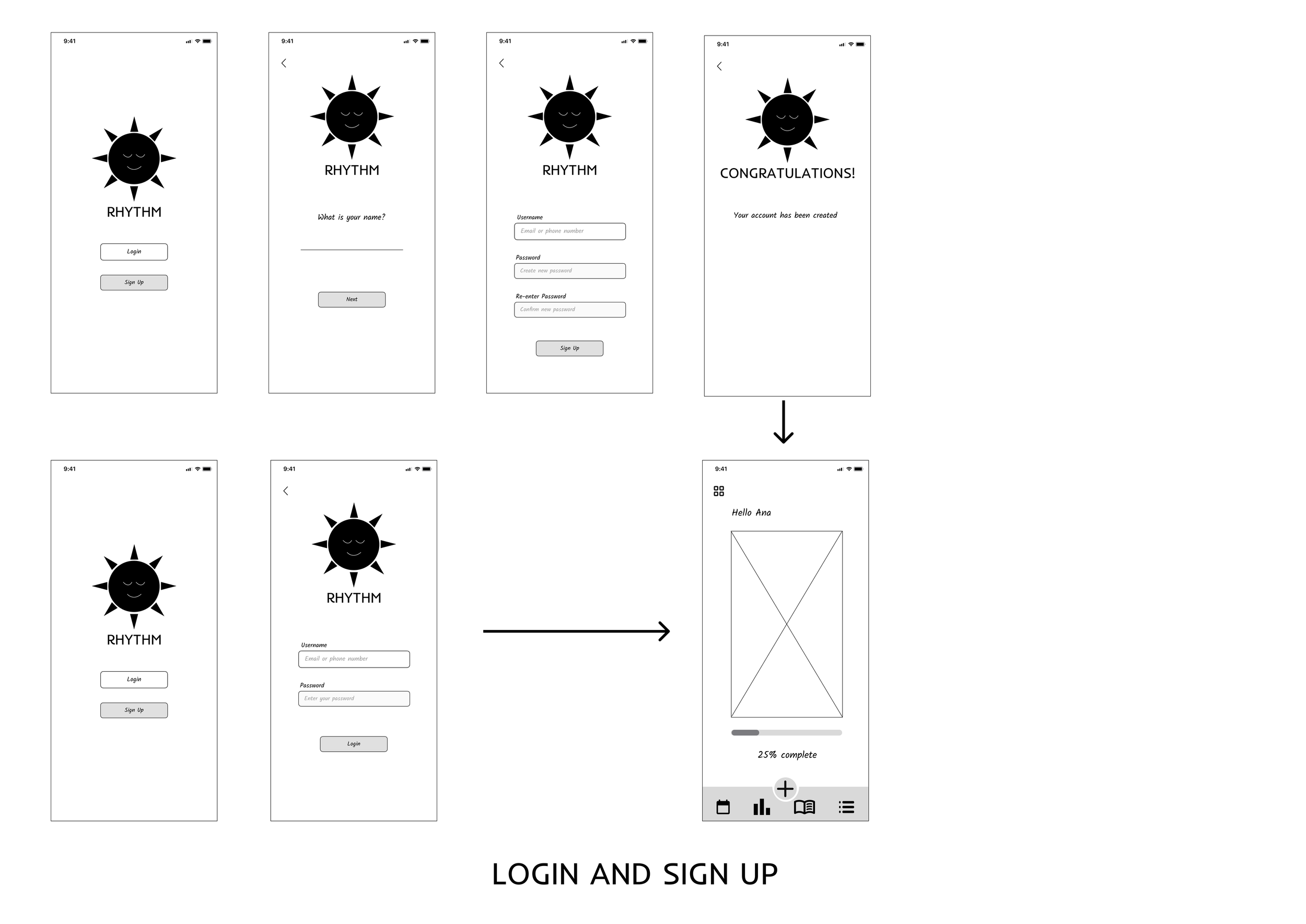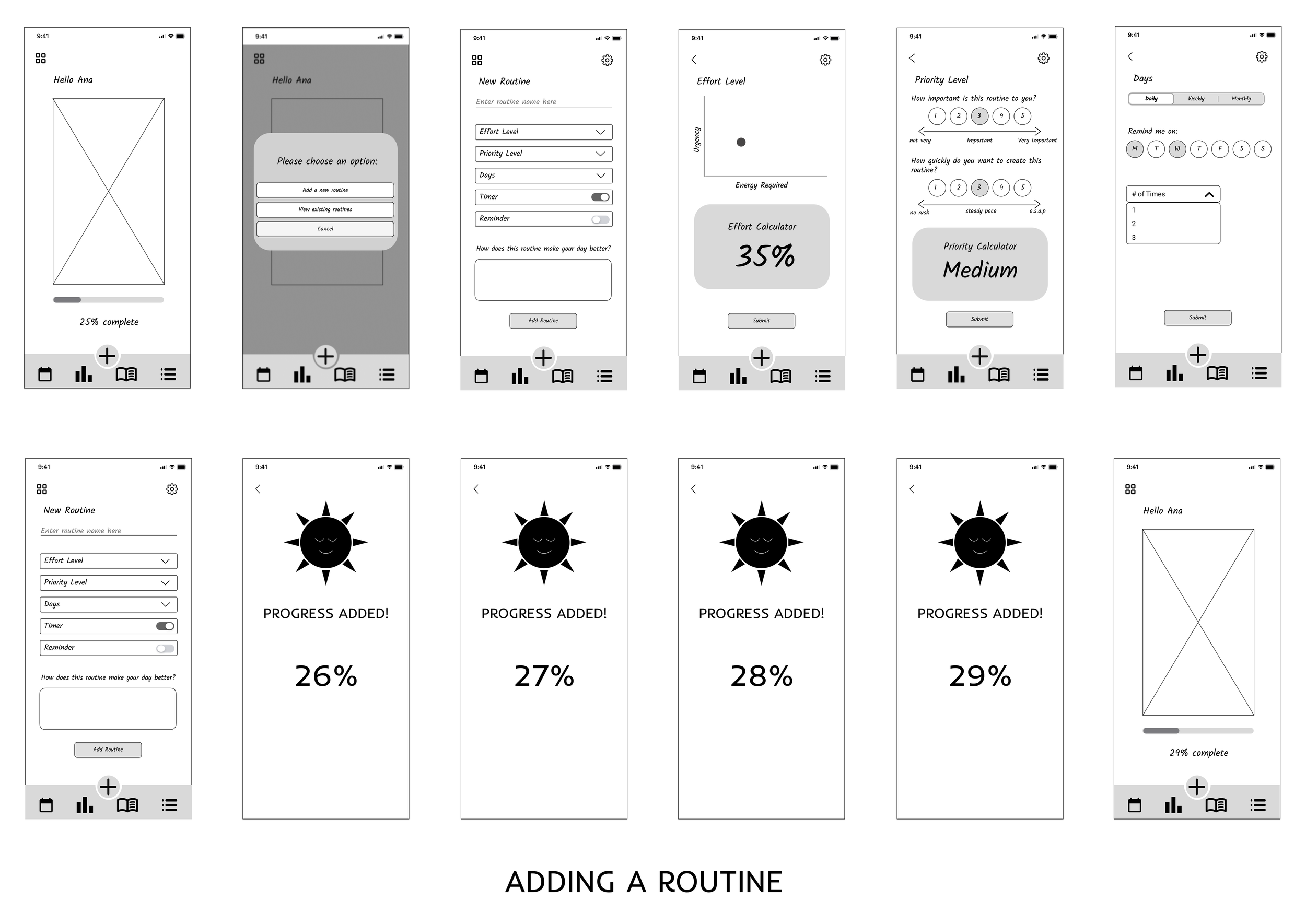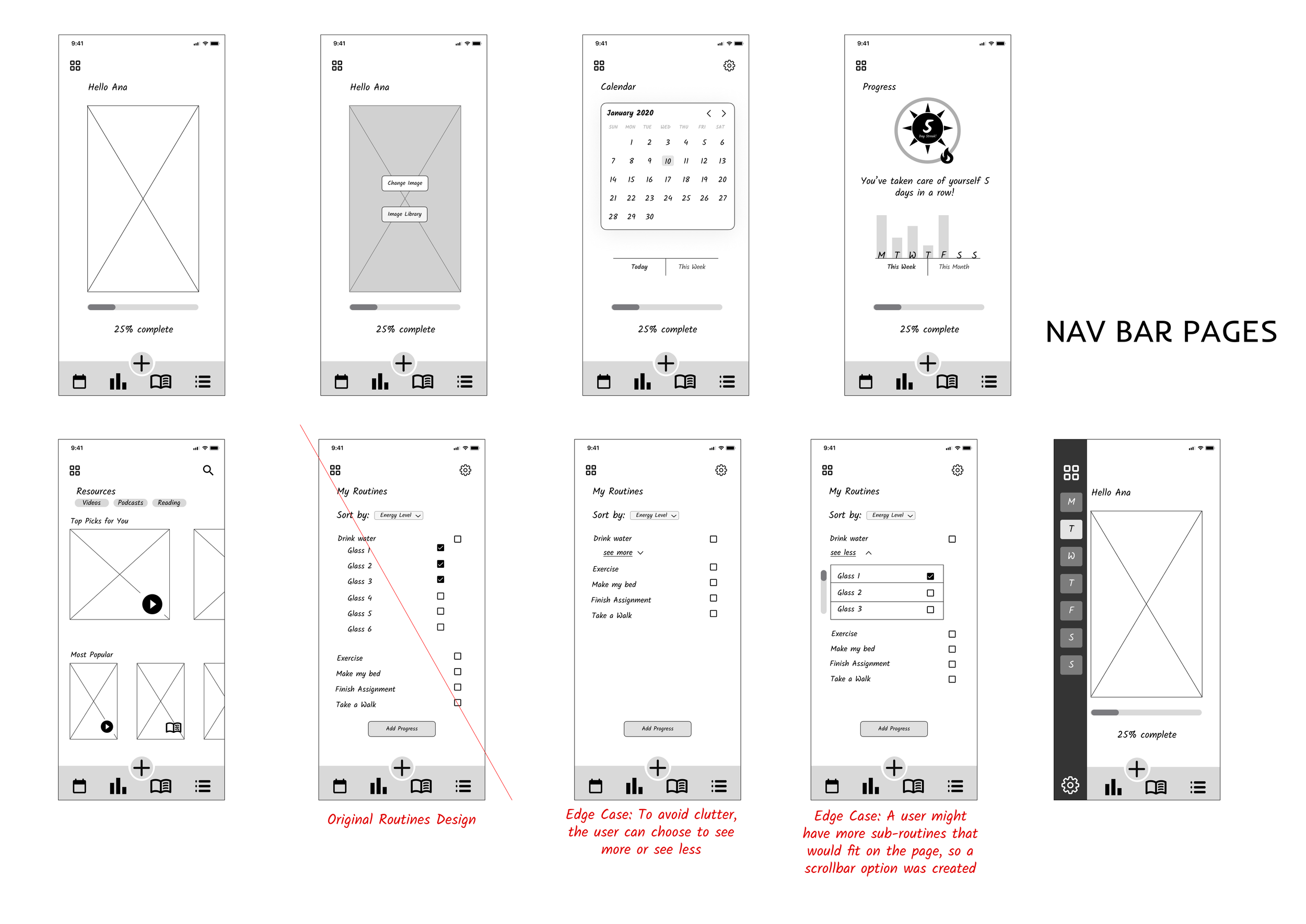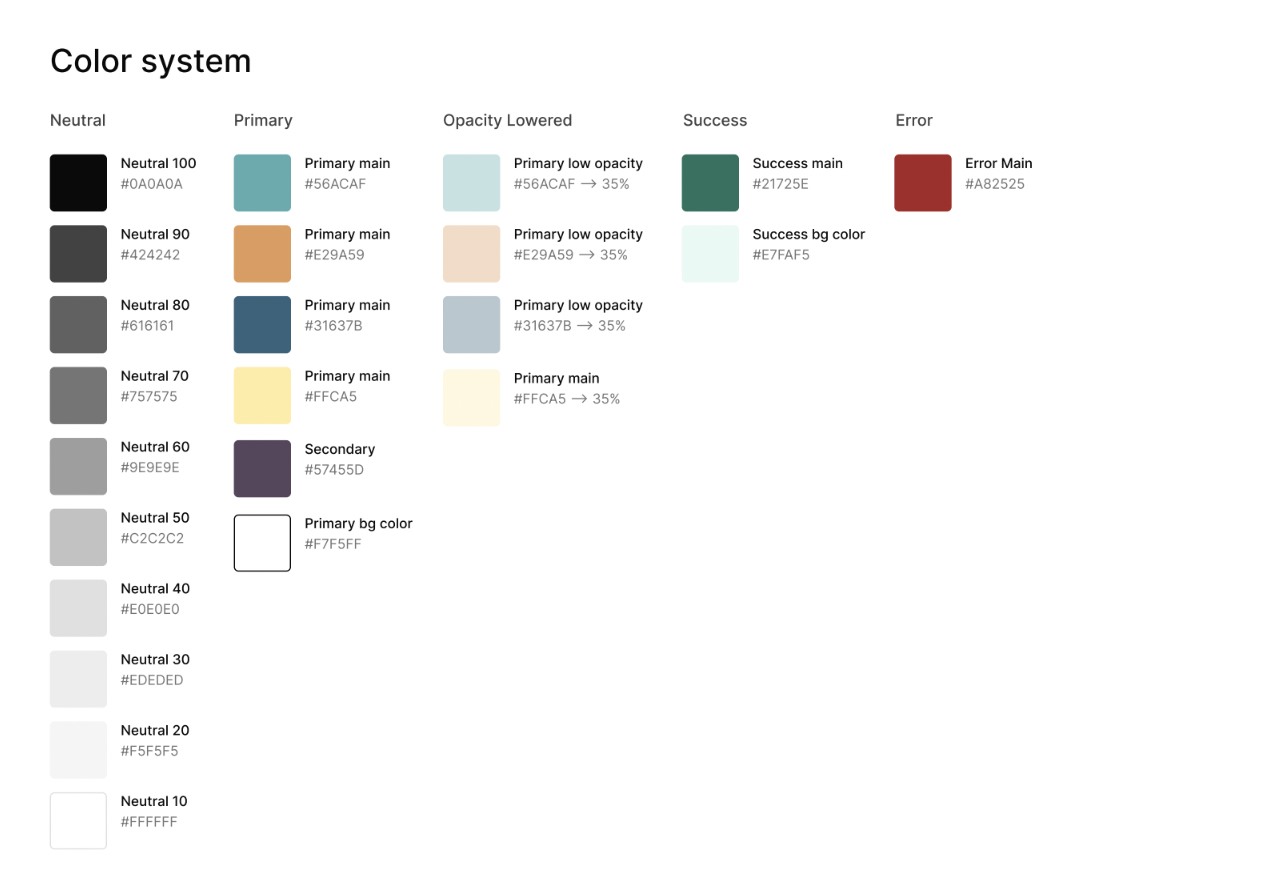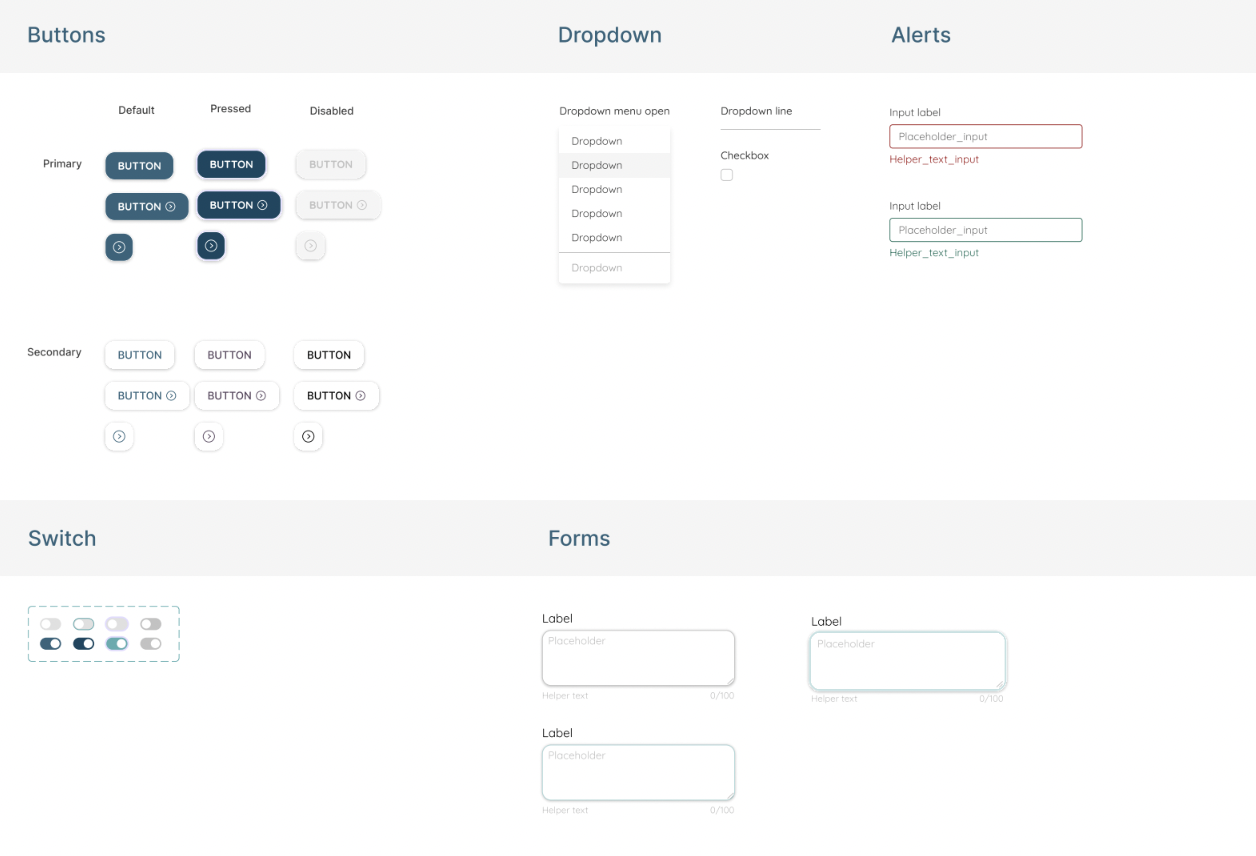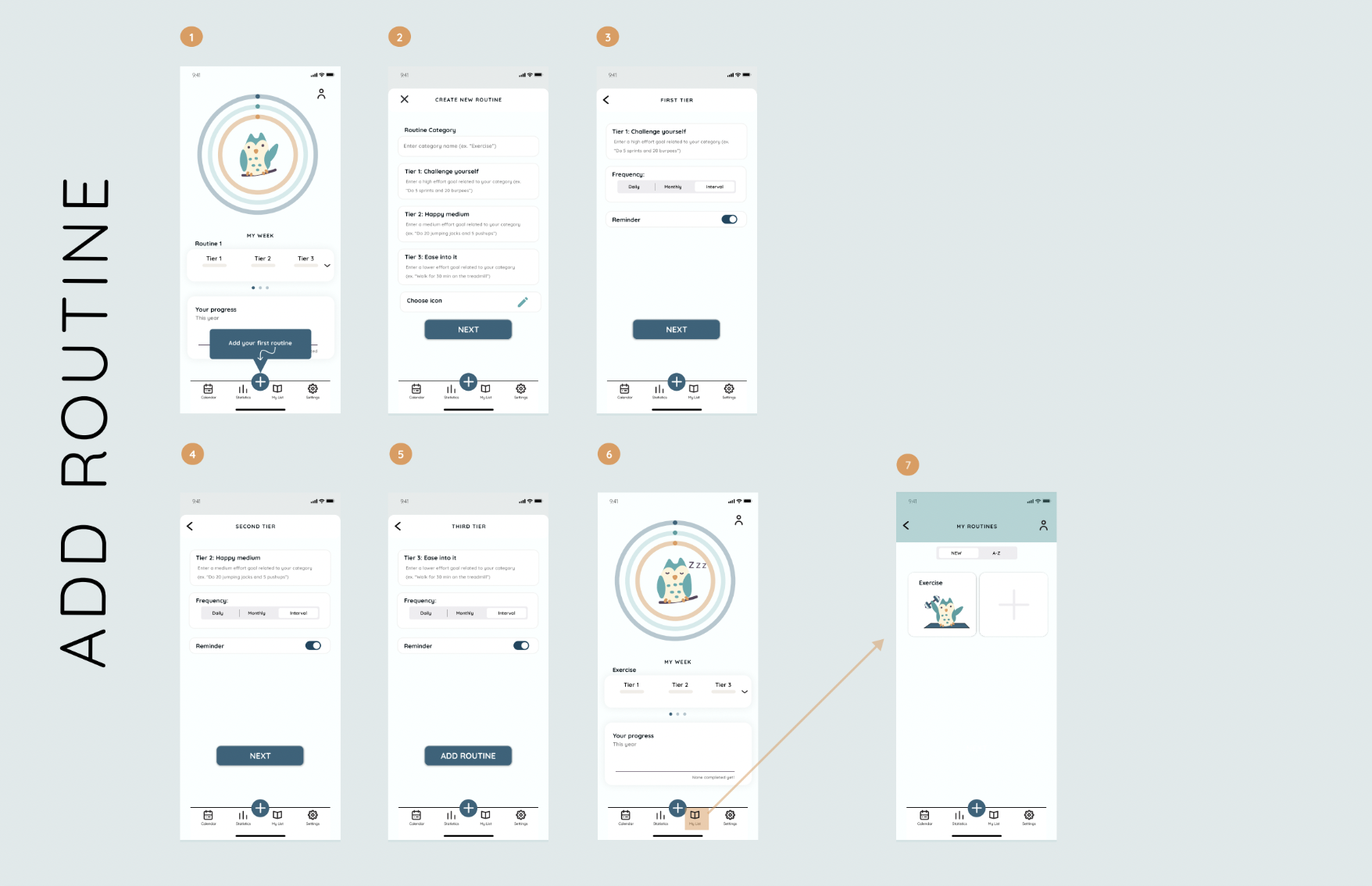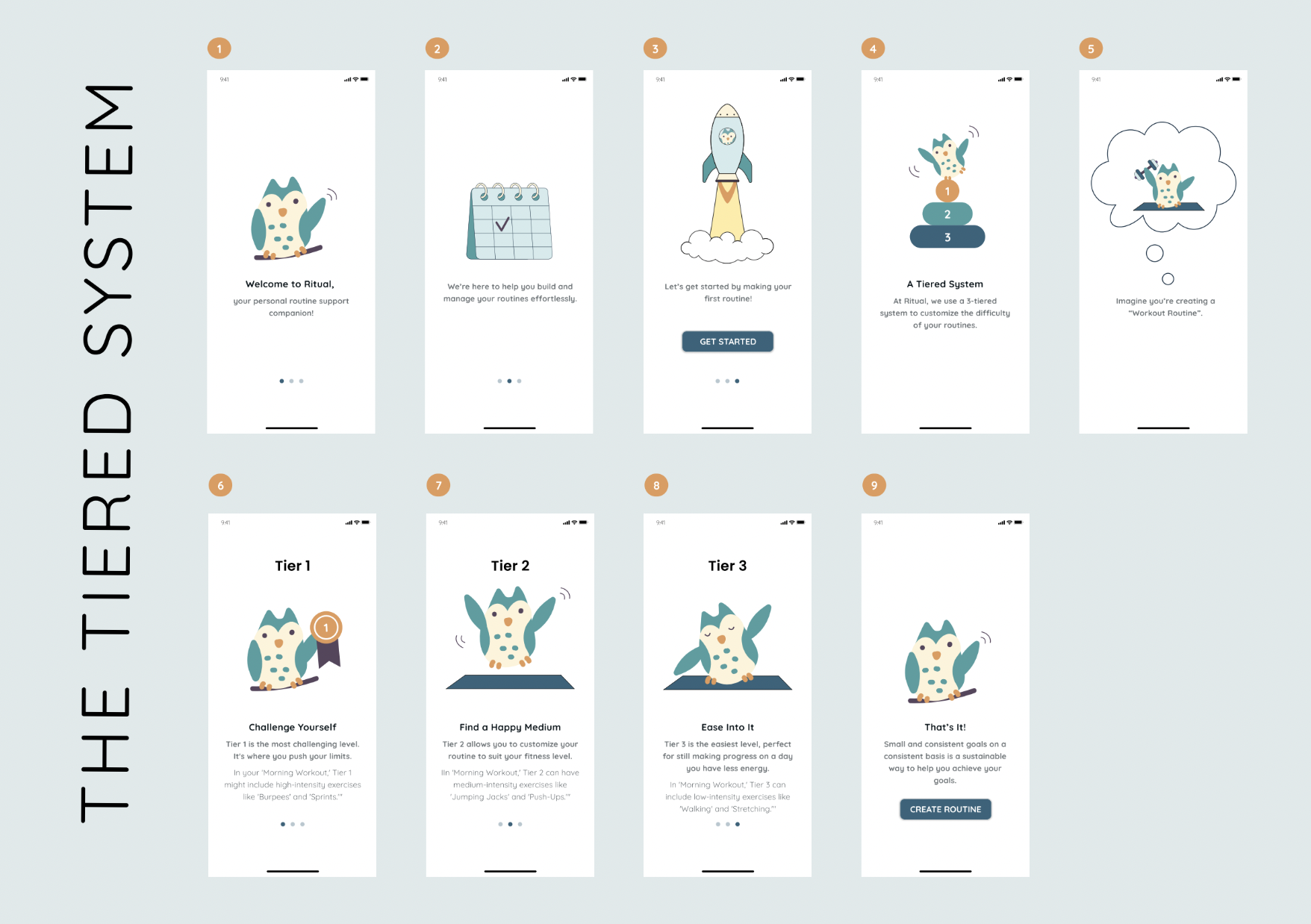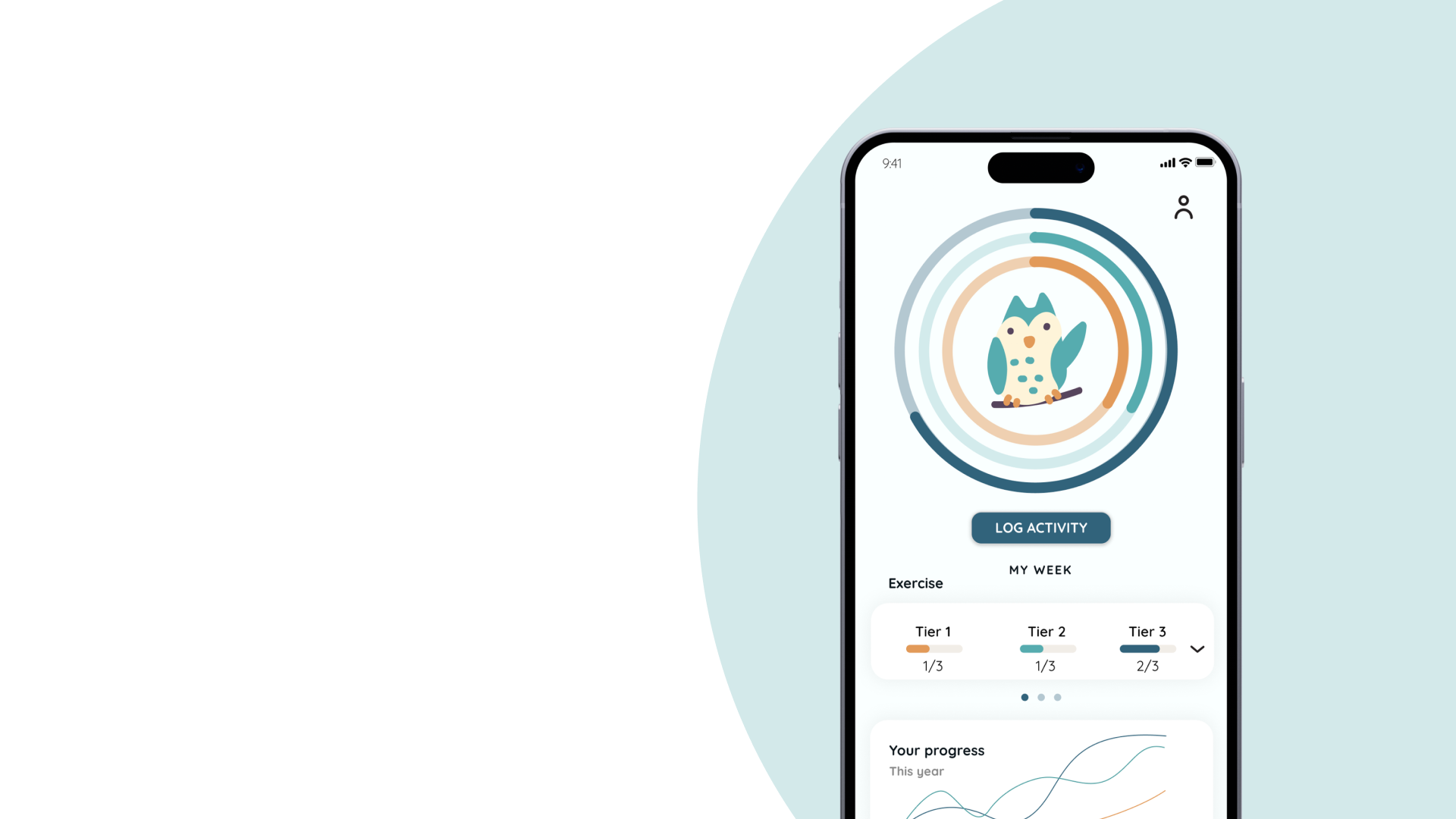
ritual
a Tiered System for Sustainable Success
a habit formation app, reimagined.
ROLE: UX Designer
TIMELINE: 6 weeks
TOOLS: Figma, Adobe Illustrator, Miro
In the age where the demand for productivity is only increasing, users are challenged with productivity frameworks that are based on a binary success-failure paradigm. This can be discouraging and unaccommodating to the variable nature of human motivation, without taking into account the complex psychological process that accompanies individuals when they are trying to build routines that are rooted in consistency and longevity. The Ritual mobile app was conceptualized to address this gap, offering a more nuanced and human-centered approach to routine management for young adults and professionals.
PROBLEM
Designing an engaging, intuitive mobile app that enables users to break down and manage their large goals into different tiers that break down each goal into bite size pieces, accommodating varying levels of daily energy and commitment, while fostering consistent, long-term habit formation.
challenge
solution
A mobile app with a customizable 3-tiered system that redefines productivity by allowing for incremental progress, adapting to users’ fluctuating daily motivation levels, and rewarding consistent effort over absolute achievement.
research & planning
-
Secondary research was conducted in order to gain a better understanding of the actual process a user encounters while trying to establish a routine. Here are some highlights:
Hussam et. al highlighted the importance of accountability factors as an important role in habit formation. While analyzing factors that could increase the frequency of hand washing through timed sensors, the researchers found that when participants anticipated future monitoring the routine of hand washing persisted despite the sensors being removed.
Phillips & Mullan (2023) defines habits as “direct context-response associations learned through repeatedly rewarded responding”, however the complexity of the behavior dictates these rewards and responses. They highlighted the importance of separable and substitutable components as an important factor towards the larger success rate of complex habits.
-
The objective of my research plan was to explore the factors that lead to establishing healthy habits, to ultimately propose a mobile app concept that will facilitate this process.
Research Questions:
What factors influence whether or not an individual will maintain a habit?
What are the most significant factors that deter habit making?
How many users feel the need to improve their habit making?
What is the point in which a repeated activity becomes a habit?
-
5 participants were recruited to take a screener designed to gather insights into personal habits, routines, and the challenges faced in maintaining them. The survey consisted of nine questions covering topics like the importance of daily routines, types of habits individuals are interested in developing, and the obstacles users faced when trying to establish consistent routines. This information was synthesized and placed into an affinity map to organize and gather insights.
After participants were screened, they were selected for semi-structured interviews.
competitor analysis
The competitor habit tracking apps were analyzed by the following criteria: Match Between System and The Real World, Aesthetic and Minimalist Design, and User Control and Freedom. This analysis was conducted through a numerical scale system, with 1 indicating poor performance and 4 indicating good performance. These scores reflect the overall user experience of each app, considering factors like clarity, design, and control, essential for effective habit tracking and user engagement. Click the arrow to the right of each competitor to reveal more details.
-
The Fabulous app is unique that it is based on psychological studies and information, created by Duke university. One of the main goals is to educate users about the psychological experience that aligns with habit formation. While some of the app’s strengths include simple language, video education, and images, sometimes the navigation path is unclear and makes decision points for users confusing. This is evidenced in UI elements like "Letter no. 1" and "Morning Routine”, which are titles that do not indicate what the user should do. While the animations are lively and impressive, it can also create a visual interface that appears crowded and overwhelming which can be a concern regarding readability and accessibility. Overall, the app scores well in providing user control and freedom, but needs improvement in UI clarity and design simplicity.
Match Between System and The Real World - 2/4 (needs improvement)
Minimalist & Aesthetic Design - 2/4 (needs improvement)
User Control & Freedom - 4/4 (good)
Total Score - 8/12
-
Eden is a habit tracker app that is striking in its simple, minimalist, and aesthetically pleasing design. It celebrates progress by allowing users to “grow a garden” with the habits they succeed in creating. The visual interface and design is simple and clear, the examples used are clear, and it uses components like motivational quotes to help inspire users. The user gains freedom by their ability to control some of the design and UI features, such as the color schemes and garden option. There is room for improvement when it comes to user control over the structure of their habit formation, as well as a lack of incentive or reward system to encourage users to maintain these habits on more of a long term scale.
Match Between System and The Real World - 4/4 (good)
Minimalist & Aesthetic Design - 4/4 (good)
User Control & Freedom - 2/4 (needs improvement)
Total Score - 10/12
-
Out of all of the habit tracking apps, Productive took the lead as far as overall popularity with over 88,000 downloads. For the most part, the icons and language are generally recognized, but there are times when the application assumes that users are familiar with concepts like “Pomodoro”, which potentially requires a user to exit the app to understand what that tool means. The visual interface suffers with some visual clutter which can impact readability. The application provides helpful resources and ways to promote habit formation, but the frequent prompts to have users subscribe to the premium version is off-putting and potentially intrusive. Productive scored average in most areas, with a need for improvement in user control and freedom.
Match Between System and The Real World - 3/4 (average)
Minimalist & Aesthetic Design - 3/4 (average)
User Control & Freedom - 2/4 (needs improvement)
semi-structured interviews & affinity map
Based on user interviews and detailed synthesis of interview notes, an affinity map was created.
This affinity map is structured into four groups - Positive Reinforcement, Tracking, Incentives to Return, and Prioritization. This method was helpful for me to organize the large amount of information obtained from interviews, and informed my decision making process when brainstorming the structure for this concept.
This affinity map shows that users care most about detailed tracking of habits, visual representations of progress, and methods to break down larger habits into manageable tasks, highlighting the importance of seeing incremental progress and having flexible, yet structured goal-setting capabilities.
empathy map
After breaking down user input and pain points by categorizing them in the affinity map, I created an empathy map to think more specifically about these insights to get a better overall understand of a possible user’s mindset.
user persona
Based on this information, I created a persona that would help me stay focused on what type of user needs I should keep in mind throughout the design process.
It’s no secret that using these frameworks and personas has been a subject of debate and varies depending on the workplace. My understanding of these tools is that it is a valuable way for me to:
-Plan in a way that provides structure yet flexibility as information adapts and changes, allowing for an environment that is friendly for future project iteration
-These frameworks encourage forward-thinking, yet call for specificity to address specific aspects of users that allow for a more consistent design process throughout
-Structuring concepts in this way helped me manage elements of uncertainty so that in the inevitable hurdles of the design process, I could refer back to these resources to inform decisions and stay on track
-If I were to have worked on a team, these methods would be a good way to collaborate with others to ensure everyone is on the same page
-Risk mitigation - planning extensively in this way lowers the risk for mistakes that, in a real-life scenario, could be costly
What’s the point
problem statement
The process of creating routines is currently run by a success-fail paradigm that is more focused on statistics and outcomes than on the human and psychological processes required to build long-lasting routines. There is an opportunity to facilitate this process by breaking down large goals into small, incremental steps to allow more chances for a user to progress forward. This way, the user will increase their success rate for routine building, management, and consistency.
user stories
User stories were created and given a priority rating, establishing the most important aspects of a minimum viable product.
user flows
Red routes were established in order to later identify the most important goals users would need to accomplish. The first was the login flow. The most important user flow was the process of creating a routine. At the time of ideation, this flow consisted of adding a routine, editing a routine, and deleting a routine. The user would have the choice to either select from a pre-determined list, or customize their own routines. Within those options, they could determine priority level, frequency, and an intention behind their goal.
wireframes
the mascot
Creating the Ritual character for a strong brand identity
brand identity basics
The core mission of this brand is to focus on the concept of self-improvement as accessible and manageable for everyone.
Core values include simplicity, consistency, flexibility, and resilience. By offering a structured, yet flexible approach, users can be encouraged to think about incremental progress as a
colors
The brand’s visual style is characterized by minimalist and calming aesthetics. The use of blue and orange in the color palette reinforces trust, calmness, creativity, and success. In communication, the brand's language is simple, clear, and encouraging.
mascot design significance
Visually, the owl mascot is a representation of wisdom, adaptability, and progress. As a user completes their routines, the owl transforms from a sleeping state and slowly awakens depending on the progress a user makes. This is a metaphorical representation of a user journey from the beginning of a routine to the end. Instead of focusing on numerical values which can sometimes be stifling and discouraging, it shifts away the attention from hard statistics to a mirror of one’s journey and growth. Because of this ideology, I changed the name of the app to Ritual.
style guide
high-fidelity red routes
the tiered system
I want to take a moment to talk about the tiered system, which was created as the most important feature of Ritual. The concept is based on the philosophy that progress is nonlinear, and consistent focus on the process and systems involved in creating a routine can directly impact user success. A user creates 3 iterations of each routine; Tier 1 is the easiest level, Tier 2 is a happy medium, and Tier 3 is the most challenging for days of high energy. Suddenly, there are 3 opportunities varying in level for users to tackle their goals, and as they build up momentum within these Tiers, they can be updated incrementally.
An inspiration for this methodology came from a book I read this year called “Atomic Habits” which emphasizes the importance of focusing on “systems” that create routines. The tiered system in Ritual embodies similar ideology that supports small, incremental changes are more sustainable and impactful over time.
usability testing
Usability tests study were conducted with participants matching our user profile. Each session lasted about 20 minutes and include a briefing, a walkthrough of the app, task performance, and a debriefing session. Tasks included signing up for the app, creating an individualized routine that can be broken down into three tiers, and tracking and updating progress on these goals.
-
Key Findings:
Onboarding Process: Initially, the tier levels went from Tier 3 being the least challenging and Tier 1 being the most challenging. This confused participants and the decision was made to reverse the order. A few screens would have benefitted from a ‘back’ navigation.
Routine Management: When adding routines, some users asked for more examples of types of routines created than were given on the instruction screens. This indicated a need to simplify the routine addition progress and add a clear progress tracking button on the main dashboard.
User Engagement: Users gave positive feedback regarding the clean and uncluttered interface. They desired a reward system to continue to provide an incentive to return to the application in the future.
-
The user insights were synthesized and a chart was created to map out issues with the design, sorting them by priority level. I used this as a guideline for redesigning the screens in order to improve the application’s functionality and user experience.
A new prototype was created that addressed typography errors, the onboarding screen examples were simplified, back button navigation in the onboarding flow, and a clear CTA button on the main dashboard to track routine progress.
-
The second usability test showed positive reception towards the implemented design changes. Key takeaways include:
Considering the inclusion of suggested popular routines or personalized goal recommendations.
Exploring reward systems and gamification to enhance user retention.
Adding social sharing capabilities to leverage community support.
Developing functionality for managing long-term goals within the app's tiered system.
final prototype
future implications
I really enjoyed the process of creating this concept, and if I were to continue the iteration process outside of this case study, I would consider the following future implications as informed by my research and second usability testing round:
Building a Community: In secondary research, it was found that engagement can be improved with a sense of accountability. Incorporating social sharing features and community engagement could help users build community and support to accomplish their goals.
Gamification to Increase Engagement: To increase user engagement, gamification elements such as streaks, badges, and rewards could add another incentive level for users to return to the application consistently.
Personalization of Routines with AI: Based on user input and progress, AI and machine learning algorithms can potentially be used for personalized suggestions and user adjustments. These changes could facilitate user progress and perhaps anticipate their needs before the user thinks of them.
Integration with Other Platforms: Connecting Ritual with other applications, such as calendars or health apps, could not only improve engagement but also centralize information from Ritual into other platforms that users regularly engage with.
Global Expansion and Inclusivity: The application should be inclusive to all by having multi-language options and support, as well as a wider range of accessibility-related features.







